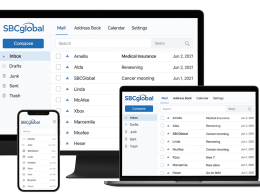Future Innovators: Why Accessible Data is Key to Advancing
In today’s world, data is king. It drives decision-making in virtually every aspect of our lives, from business to healthcare and beyond. As we move into the future, the importance of accessible data cannot be overstated. In this blog post, we will explore how accessible data empowers education and advances Artificial Intelligence (AI). We’ll look at its impact on innovation and discuss ways to make it more accessible for everyone. Join us as we dive into the fascinating world of data accessibility and its exciting potential for the future!
The Importance of Data
Data is the backbone of progress. It is what drives innovation and fuels growth, both on an individual and societal level. Data allows us to make informed decisions based on facts, rather than assumptions or guesswork. By carefully analyzing data sets, we can identify patterns and trends that might otherwise go unnoticed.
At its core, data gives us insight into human behavior – how people think, feel, and act in different situations. This information is invaluable for businesses looking to improve their products or services by tailoring them to customer needs. Government agencies also rely heavily on data to inform policy decisions that affect citizens’ lives.
However, the importance of data extends far beyond just business and government. In healthcare, for instance, doctors use patient medical records to diagnose illnesses and develop treatment plans. Educational institutions also use data analysis techniques to monitor student performance and identify areas where improvements are needed.
In short: without accessible data at our fingertips – none of this would be possible!
How Accessible Data is Used
Accessible data is used to inform and drive decision-making across a variety of industries, including healthcare, finance, education, and more. With the rise of machine learning and artificial intelligence (AI), accessible data has become even more critical for advancing innovation.
In healthcare, accessible data enables doctors to make better diagnoses by analyzing patient information in real-time. This allows them to identify patterns or anomalies that may have otherwise gone unnoticed-empowering medical professionals to provide faster and more accurate treatments.
In finance, accessible data helps institutions manage risk by identifying potential threats before they materialize. By leveraging AI algorithms built on top of vast amounts of historical financial data, banks can predict future market trends with greater accuracy than ever before.
In education, access to student performance metrics can help teachers tailor their lesson plans based on the unique needs of each learner. With this approach – known as personalized learning – students are empowered to learn at their own pace using materials customized specifically for their abilities.
Accessible data is essential for unlocking new innovations in every industry sector imaginable; it provides vital insights into how we live our lives today while also empowering us all towards creating an increasingly intelligent future powered by AI technologies!
The Future of Data
The future of data is rapidly evolving, and it’s exciting to see the possibilities that will arise. The immense amount of data being produced every day can be utilized in many ways, such as improving healthcare, education, and business operations. With advancements in artificial intelligence (AI), we can expect automated systems to analyze large amounts of data faster and more efficiently than humans ever could.
One possible future for accessible data is the increased use of predictive analytics. By analyzing patterns in vast amounts of historical data, organizations can make informed decisions about future trends or events before they occur. This has the potential to revolutionize industries such as finance and marketing by providing more accurate predictions on market movements or customer behavior.
Another area where accessible data will play a crucial role is in cybersecurity. Cyber threats are becoming increasingly sophisticated, meaning businesses must have up-to-date information at their fingertips to protect themselves from attacks. Accessible real-time threat intelligence allows companies to identify cyberattacks immediately and respond quickly to mitigate damage.
The possibilities for using accessible data are endless – but it’s clear that those who embrace this technology early on stand to benefit greatly from its potential applications across multiple industries.
How to Make Data More Accessible
Making data more accessible is crucial to unlocking its full potential. Here are some steps that can be taken to make data more easily available:
1. Standardization: Data should be standardized so it can be shared and analyzed across different platforms and systems.
2. Openness: Making data open and available in a user-friendly format encourages innovation, collaboration, and creativity.
3. User Interface: The interface for accessing data should be easy to use, with intuitive navigation tools that allow users to quickly find the information they need.
4. Machine-Readable Formats: Providing structured, machine-readable formats such as CSV or JSON makes it easier for programmers to work with the data.
5. Metadata Standards: Using metadata standards ensures that information about the dataset is consistently recorded, making it easier for people to understand what the data represents.
By implementing these measures, we can empower individuals and organizations alike by providing them with access to valuable insights derived from analyzing large datasets. With greater accessibility comes greater opportunity – an opportunity that will surely lead us towards a brighter future driven by education and AI advancement!
The Impact of Accessible Data
Accessible data is key to empowering the future innovators of our world. By making data more accessible, we can ensure that everyone has the opportunity to learn and innovate with it.
Through education and AI advancements, we can continue to improve accessibility and make it easier for people to access and use data in meaningful ways. The impact of accessible data is immeasurable, from improving healthcare outcomes to driving economic growth.
As technology continues to evolve, so too will our ability to access and analyze data. With a commitment to accessibility, we can ensure that innovation remains within reach for everyone, regardless of their background or circumstances.
So let’s work together towards a future where accessible data empowers us all!












